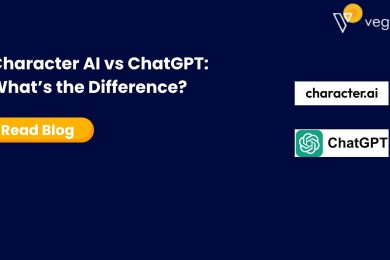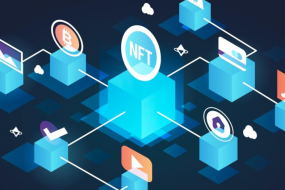
As blockchain technology matures, scalability and interoperability have become key priorities for the growth of decentralized applications and networks. Two prominent platforms addressing these challenges are Cosmos and Substrate, which both aim to facilitate communication between independent blockchains. However, they take different technical approaches to achieve this. Cosmos implements a hub-and-spoke architecture while Substrate is based on reusable modules called pallets. In this blog post, we will examine how Cosmos and Substrate work under the hood, the problems they seek to solve, and do a detailed comparison of their architectural differences. The goal is to provide readers with an in-depth understanding of these two leading platforms that are powering the expansion of the decentralized web.
What is Cosmos?
Cosmos is an ecosystem of connected, sovereign blockchains designed for building distributed applications. It aims to solve issues around scalability, interoperability, and decentralization that face existing blockchain networks. At the core of Cosmos is the Cosmos Hub, a proof-of-stake blockchain that acts as a decentralized satellite chain connecting the network of zone blockchains.
Individual blockchains that join the Cosmos network are called zones. Each zone operates as its blockchain with its tokens, governors, and validators, giving it sovereignty over its security and upgrades. However, zones share security by delegating their validator sets to the Cosmos Hub. This allows each zone to scale independently but still benefit from network effects across the larger Cosmos ecosystem.
Zones interact with each other through the Inter-Blockchain Communication protocol (IBC), which allows for the transfer of assets and data between different zones in a trustless manner. IBC facilitates the creation of interconnected decentralized applications across Cosmos in a scalable and interoperable way.
How does Cosmos work?
Here are the key points on how Cosmos works:
- Cosmos is powered through a community of sovereign blockchains known as zones. Each quarter operates independently with its very own validators, governance, and tokens.
- Zones are related to each other via the Cosmos Hub, which validates transactions for all linked zones. The Hub acts as a centralized coordinator that permits zones to delegate safety whilst maintaining sovereignty.
- Zones use the Inter-Blockchain Communication (IBC) protocol to soundly speak and switch belongings/facts between each other. IBC establishes cryptographic proofs to make certain transactions are legitimate throughout zones.
- To send an asset from one area to another, IBC first locks the asset at the sending region. It then gives a timeout period for the receiving area to fetch the data and acknowledge the switch.
- Once mentioned, the asset is unlocked at the sending region and locked at the receiving area. This allows for trustless, asynchronous communique among independent blockchains.
- IBC facilitates disbursed application construction by way of allowing builders to create interconnected applications that securely coordinate obligations and share statistics/fees throughout more than one zone.
- Governance for every region is independent. Zones can pick out their own validators units, upgrade protocols separately, and manage their very own tokens.
What Problems Does Cosmos Solve?
Here are the key problems that Cosmos aims to solve:
- Scalability- One of the important things Cosmos pursues to deal with is scalability. In the Cosmos model, every independent region can scale in step with its own needs and transaction throughput. In this approach paintings and transactions may be allotted throughout multiple validating zones, decreasing bottlenecks. No unmarried entity needs to process all transactions. Zones also use varying consensus mechanisms like tendermint, permitting them to pick techniques pleasant applicable to their use instances and scalability requirements. By permitting scaling on the zone degree in preference to waiting for a single blockchain to scale infinitely, Cosmos creates a greater scalable atmosphere.
- Interoperability – Interoperability is another core trouble that Cosmos objectives via its community structure. At gift, many blockchain networks perform as silos, unable to communicate or have interaction with one another. Cosmos addresses this via the use of the IBC popular communication protocol. IBC permits the secure transfer of belongings and facts between sovereign zones in a trustless way. This enables value and statistics to flow throughout the complete Cosmos atmosphere, breaking down boundaries. It also facilitates the construction of distributed packages that may seamlessly coordinate duties and proportion records spanning multiple unbiased blockchains.
- Decentralization – Decentralization is crucial for blockchain networks, but scaling often comes at the cost of losing decentralization. Cosmos strikes a balance through its zone model. While each zone maintains its autonomous governance and set of validators, zones also benefit from linking to each other for security and sharing workloads. This achieves both coordination across the ecosystem and decentralization at the local zone level. Zones are also free to choose their consensus mechanisms, providing flexibility while still plugging into the common IBC protocol. As a result, Cosmos enhances overall security through connections, without compromising the decentralization of individual zones.
What is Substrate?
Substrate is an open-source and modular blockchain development framework created by Parity Technologies. It aims to drastically simplify the process of building programmable blockchains from scratch. At its core, Substrate provides commonly required blockchain functionality through reusable components called “pallets”. Pallets handle features like consensus, finality, staking, and more. Developers can rapidly assemble unique customized blockchains by selectively combining only the pallets needed for their project.
Substrate blockchains are written in the Rust programming language for high performance and security. Developers define their blockchain’s initial state and upgrade mechanisms via a “runtime” module. The runtime utilizes the built-in pallets to determine how the blockchain processes transactions and reaches consensus. Once the runtime is defined, Substrate can compile it to highly optimized WebAssembly. This produces a secure yet easily modifiable blockchain implementation that can scale from simple to complex use cases. Substrate’s modular approach allows for rapid iteration and simplifies experimenting with innovative consensus mechanisms, economic models, and protocols.
How does Substrate work?
Here are the key points about how Substrate works:
- Substrate allows developers to build blockchains by combining pre-built modules called pallets that handle common functions like consensus, staking, permissions, etc.
- Pallets are written in the Rust programming language and can be mixed and matched to create unique blockchains tailored to specific needs.
- Developers define how pallets interact through a runtime configuration file. The runtime specifies the initial state and upgrade mechanisms.
- Substrate compiles the runtime into WebAssembly to produce an extremely lightweight yet highly performant blockchain node that validates and processes transactions.
- Nodes in the network share a common transaction format and intrinsic functions through Substrate’s native functions, allowing interoperability.
- Consensus is achieved through the flexible nomination process which is also defined in the runtime using the consensus pallet.
- The modular approach means Substrate chains are highly customizable yet benefit from shared tooling, security updates, and a large developer community.
- Developers have full control over economic design, governance, and upgrade mechanisms through runtime configuration and pallets.
Core concepts of Substrate blockchain development
Here are some of the core concepts of Substrate blockchain development:
- Pallets – Pallets shape the middle modular building blocks of any blockchain constructed with Substrate. They are cognizant of precise regions of functionality like consensus, staking, identity management, or tokenization. Pallets can be compiled into Rust libraries and added to any Substrate-based chain, allowing the capability to be reused across more than one blockchain. This permits developers to pick and pick out the features they want to construct new software-unique blockchains effectively. The runtime then links all selected pallets collectively to power the general behavior of the chain. Pallets provide reusable, reusable modules that can be dynamically composed for every new blockchain challenge built on Substrate.
- Runtime – The runtime acts because of the core execution surroundings of a Substrate-based blockchain. It defines the overall rules and capability of the chain by linking together all the chosen pallets to shape a cohesive unit. When a block is finalized, the runtime executes the code from every pallet to validate transactions, reach a consensus, and update the state as wanted. This permits unique components like consensus and upgrade mechanisms to interact seamlessly. The runtime gives a virtual system-like interface that pallets can goal, making them unbiased of the specific blockchain implementation. It brings together all modules to manipulate how the chain processes and validates updates to its state.
- Chainspec – A chainspec file specifies all the parameters needed to bootstrap a blockchain network on Substrate. It encodes information like the proof of work protocol, block period, initial validator set, or economic rules like the annual inflation rate. Developers use chain specs to hard code aspects of governance that are unlikely to change like minimum commission. Nodes use this blueprint to set up the initial state and determine how to validate new blocks. The chainspec brings the theoretical runtime configuration alive on real nodes by locking in core assumptions about dynamics like consensus. It allows anyone to reliably launch a copy of the specified blockchain.
- Events – Events provide a mechanism for pallets to emit notifications about state changes occurring within the runtime. Pallets can issue events to signal transactions, upgrades, or errors to clients interacting with the blockchain. Events are handled and processed by the runtime but do not directly alter state. Instead, they act as a publishing mechanism for pallets to broadly communicate updates. Clients like wallets, block explorers, or frontends can easily subscribe to all events or filter for specific types. This allows external processes to efficiently track important actions on-chain without querying the state directly. Events enhance transparency and integration with the extended ecosystem.
- Extrinsics – Extrinsics are predefined functions that pallets expose externally to enable interactions with users and clients. Functions like transferring funds or voting are implemented through extrinsic. When signed and submitted, extrinsic trigger state transition evaluations by the runtime. They provide standardized ways for users to initiate actions on the blockchain through transactions. Pallets define extrinsic that match their functionality so clients can reliably know which functions are available. The runtime then handles dispatching and validating extrinsic in turn. This extensible design allows pallets to manage their external interfaces independently.
- Transactions – Transactions are the mechanism by which users can call extrinsic and initiate state changes on a Substrate chain. They consist of a signature, provided keys, and relevant call data. Users sign and submit transactions which are then handled by the runtime. Valid transactions contain the necessary signature to authorize account usage as well as any requisite transaction fees. The runtime evaluates transactions by dispatching associated extrinsic while following consensus rules. Successful transactions trigger state transitions and are then packaged into blocks. This model allows autonomous, secure interactions with the blockchain through an established and standardized procedure.
Cosmos vs Substrate: The differences
Here are some of the key differences between Cosmos and Substrate:
- Architecture: Cosmos uses a hub-and-spoke model where sovereign zones connect to a central Cosmos Hub. Substrate enables standalone parachains that can interact directly.
- Interoperability: Cosmos zones communicate through its IBC protocol. Substrate uses the XCMP protocol built into parachains to transfer messages and assets.
- Flexibility: Cosmos zones are built from scratch for a predefined function. Substrate enables rapid development and iteration using reusable pallets for multi-purpose chains.
- Upgrades: Cosmos hubs can fork zones for upgrades while retaining autonomy. Substrate relies on on-chain governance to upgrade parachain runtimes collaboratively.
- Consensus: Cosmos focuses on BFT algorithms like Tendermint for finality. The substrate supports BFT, Nominated PoS, and alternative consensus mechanisms.
- Modularity: Cosmos zones manage their networking. Substrate chains can leverage common Polkadot or Kusama connectivity through parachains.
- Governance: Cosmos hubs maintain centralized control over IBC. Polkadot and Kusama have decentralized on-chain governance by DOT/KSM holders over protocol upgrades.
Conclusion
While both Cosmos and Substrate make significant contributions to scalability and interoperability in the blockchain ecosystem, they diverge in their technical designs and implementation. Cosmos emphasizes the independence and sovereignty of zones, with a centralized hub controlling IBC updates. Meanwhile, Substrate focuses on reusable components, standing consensus, and on-chain governance to iteratively upgrade networks collaboratively. For developers, Substrate offers flexibility whereas Cosmos zones are tailored for narrow functions. Overall, the two platforms tackle interoperability through different means but both play an important role in propelling the decentralized web forward by enabling next-generation blockchains to securely connect.










